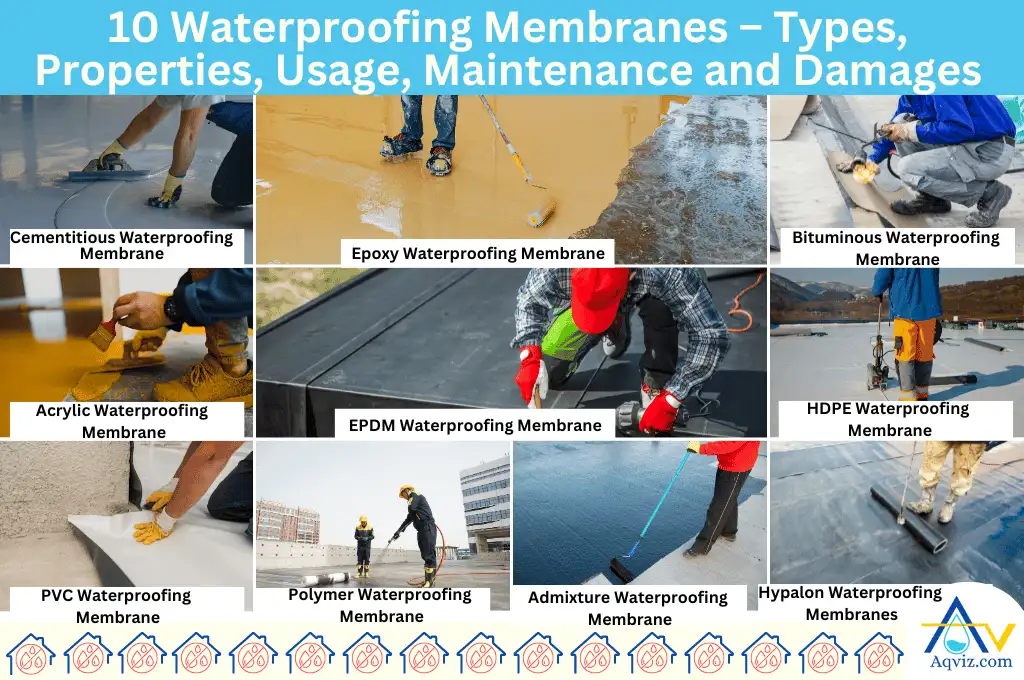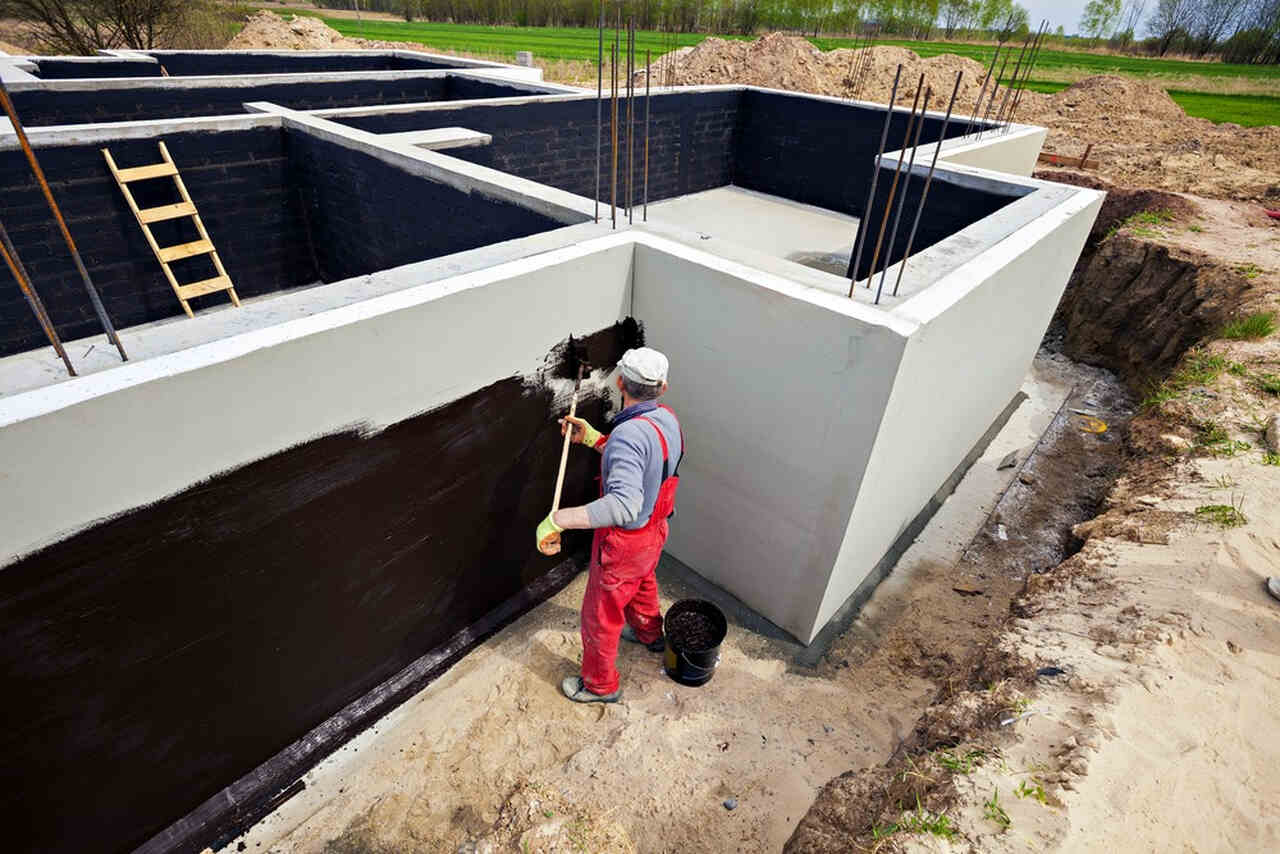How Waterproofing Functions: A Comprehensive Consider Strategies and Technologies
Waterproofing is necessary for safeguarding frameworks from moisture-related damages. It involves numerous techniques and modern technologies that produce barriers versus water intrusion. Standard methods, such as compressed clay, coexist with modern-day developments like liquid-applied membrane layers. Comprehending the subtleties of these methods is vital for efficient application. However, the efficiency of any kind of waterproofing option pivots not only on the strategies used however additionally on continuous upkeep and inspection. What are the crucial factors that influence long-lasting efficiency?
Understanding the Fundamentals of Waterproofing
Waterproofing is a crucial process that safeguards frameworks from water breach, which can lead to considerable damages with time. This method involves the application of different materials and strategies made to create a barrier against wetness. The main objective is to stop water from penetrating surfaces, which can cause damage, mold and mildew growth, and architectural instability.Various factors influence the option of waterproofing method, including the sort of structure, its place, and environmental conditions. Comprehending the physics of water motion and the properties of different materials is crucial in choosing an efficient waterproofing solution.Effective waterproofing not only safeguards buildings but also enhances their longevity and integrity. Typically, it is integrated right into the layout stage of building and construction to assure detailed defense. As understanding of water-related problems grows, the significance of understanding waterproofing fundamentals comes to be significantly clear to engineers, home builders, and building proprietors alike.
Standard Waterproofing Methods
Traditional waterproofing approaches have actually been used for centuries, relying on reliable methods and materials to safeguard frameworks from water damage. Among the earliest methods entails making use of clay, which, when compressed, produces a natural obstacle against dampness. Furthermore, bitumen, a sticky, black product originated from oil, has been employed for its waterproof homes, frequently used to roofing systems and foundations.Another technique entails the application of lime-based plasters, which offer a breathable layer that permits moisture to escape while preventing water ingress. Thatch roofing, a typical method still seen in some cultures, offers exceptional waterproofing because of its tightly packed straw layers.Moreover, making use of stone and brick has actually been prominent, as these materials are naturally immune to water when correctly set up. On the whole, traditional waterproofing techniques stress the significance of choosing appropriate products and building practices to improve toughness against water intrusion.
Modern Waterproofing Technologies
Improvements in modern-day waterproofing innovations have actually transformed the method frameworks are secured from water damages. Innovative techniques such as liquid-applied membranes and sophisticated sealants have boosted the effectiveness and flexibility of waterproofing services. These technologies permit seamless application, minimizing the threat of leakages and ensuring detailed coverage over complicated surfaces.Moreover, the combination of wise modern technologies, such as dampness sensors and automated tracking systems, allows real-time evaluation of waterproofing efficiency. This aggressive strategy promotes timely maintenance and minimizes lasting repair costs.Additionally, innovations in spray-applied coatings supply fast application and excellent attachment, adjusting to various substrates while supplying robust protection. Methods like polymer-modified systems additionally enhance flexibility and durability, making them suitable for diverse environments. Overall, modern waterproofing modern technologies not only reduce water invasion but also add to the longevity and sustainability of frameworks, noting a considerable change in the market.
Materials Made Use Of in Waterproofing
The effectiveness of waterproofing services greatly relies on the materials made use of in their application. Various materials are employed to produce obstacles against water access, each with special residential or commercial properties suited for various settings. Generally made use of materials include important source membranes, finishes, and sealants.Liquid-applied membranes, usually made from polyurethane or acrylic, develop a seamless barrier that adjusts to complex surfaces. Sheet membranes, normally built from rubber or polycarbonate, offer sturdiness and are excellent for bigger areas. In addition, cementitious waterproofing materials, made up of cementitious substances, give superb bond and flexibility.Sealants made from silicone or polyurethane are important for joints and joints, ensuring thorough protection. Advanced materials, such as geo-composite membrane layers, incorporate multiple features, enhancing efficiency. Overall, the selection of waterproofing materials is crucial in achieving durable and effective water resistance, customized to details project needs and ecological conditions.
Usual Applications of Waterproofing
Waterproofing plays a crucial role in different sectors, ensuring the durability and stability of frameworks. Usual applications consist of household options that secure homes, business infrastructure that safeguards organizations, and commercial settings that call for robust protection versus wetness. Understanding these applications highlights the significance of waterproofing in keeping both security and functionality throughout various environments.
Residential Waterproofing Solutions
Several house owners deal with challenges with moisture intrusion, making reliable domestic waterproofing remedies important. Different methods exist to address this concern, including inside and outside waterproofing systems. Inside services often involve the application of sealers and finishes to basement walls, which assist prevent water seepage. Outside techniques normally consist of the setup of drainage systems and water-proof membranes that draw away water away from the foundation.Additionally, home owners may think about sump pumps to remove water accumulation and dehumidifiers to manage humidity levels. Correct grading and making use of rain gutters additionally play a vital duty in handling water circulation around the home. By applying these strategies, house owners can considerably reduce the danger of water damage and mold and mildew growth, making certain a completely dry and secure living atmosphere.

Industrial Framework Protection
Efficient waterproofing solutions play an important duty in the security of business framework. Sump pump installation & replacement Omaha. These methods are necessary for safeguarding structures, auto parking frameworks, and bridges from water damages, which can compromise architectural integrity and lead to pricey repairs. Common applications consist of the setup of membranes, finishes, and sealers that create obstacles against dampness infiltration. Locations such as cellars, roofing systems, and outside walls are commonly prioritized to guarantee long life and durability. In addition, waterproofing systems can enhance energy performance by protecting against water-related issues that may cause mold growth and deterioration. By executing robust waterproofing steps, residential property owners can protect their investments and preserve functional efficiency, ultimately contributing to the total sustainability of industrial centers
Industrial Applications Overview
While different fields deal with unique difficulties, the requirement for trustworthy waterproofing remedies continues to be a consistent in industrial applications. Industries such as production, building, and energy typically run into settings where moisture exposure can jeopardize structural stability and functional performance. In producing centers, waterproofing is critical for securing machinery and materials from water damage. In building, it safeguards structures fluid applied waterproofing and basements versus groundwater infiltration. The power industry counts on waterproofing for the protection of devices in hydroelectric plants and offshore frameworks. Furthermore, food processing markets utilize waterproofing to assure hygiene and compliance with safety standards. On the whole, efficient waterproofing remedies are essential for boosting durability, safety, and performance across various commercial setups.
Maintenance and Long Life of Waterproofing Solutions
Waterproofing remedies are developed to supply long-lasting defense against dampness intrusion, normal maintenance is necessary to guarantee their efficiency and longevity. Routine examinations play a considerable duty in identifying prospective issues such as fractures, peeling off, or signs of water damage. Resolving these problems immediately can protect against further degeneration and costly repairs.Additionally, cleaning up the surface area of waterproof areas helps eliminate dust and debris that could compromise the integrity of the waterproofing barrier. It's additionally advisable to reapply protective finishes or sealers as advised by producers to preserve suitable efficiency. Ecological factors, such as UV exposure and extreme climate condition, can influence the lifespan of waterproofing materials, making regular assessment important
Often Asked Concerns
Can Waterproofing Be Applied in Winter?
The inquiry of using waterproofing in winter elevates concerns about adhesion and curing. Many products might not perform at their ideal in reduced temperature levels, demanding mindful option and factor to consider of details standards for reliable application.
The Length Of Time Does Waterproofing Normally Last?
The period of waterproofing efficiency varies based on products and ecological aspects. Normally, it can last from five to 10 years, but regular upkeep and examinations are important to ensure peak performance and longevity.
Is Do It Yourself Waterproofing Effective and Safe?
The performance and security of DIY waterproofing depend on numerous aspects, including material top quality and application method. While some individuals achieve satisfactory outcomes, others may come across concerns that jeopardize long-lasting protection and structural stability.
What Are the Indications of Failing Waterproofing?
Signs of falling short waterproofing include noticeable water spots, peeling paint, mold and mildew growth, musty smells, and dampness in wall surfaces or ceilings - Drainage & waterproofing company Omaha. These signs recommend jeopardized obstacles, requiring punctual evaluation navigate to this website and possible remediation to stop additional damages
Exactly how Do I Pick the Right Waterproofing Professional?
